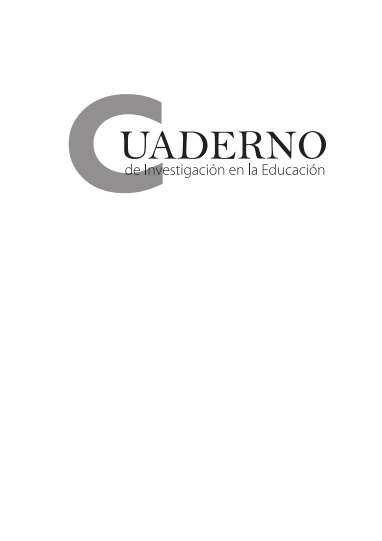Abstract
In this paper theater is presented as an effective tool for teaching mathematics. Likewise, it encourages the curricular integration of two disciplines, such as theater and statistics. This action research involved students from the High School of the University of Puerto Rico. Through the use of theatrical performance, students were able to explain statistical concepts that initially seemed too abstract or incomprehensible to them, and at the same time understand processes, formulas and statistical principles while performing short plays. This showed that drama could be a teaching tool that can help students to assimilate content and statistical concepts with greater success and ease. It was also possible to change students‘ expectations and vision for statistics, and to strengthen the knowledge acquired in this subject.
How to cite:
Rivera-Rivera, E., & Colón-Vélez, W. (2014). El uso del teatro como herramienta didáctica en la enseñanza de la estadística. Cuaderno de Investigación en la Educación, 29, 47-58. Retrieved from https://revistas.upr.edu/index.php/educacion/article/view/13253
References
Balbuena Castellanos, L. (2001, junio). La creación de los números. Suma, 37, 99-104.
Campoverde, J., Montalvo, J., Pesántez Palacios, L. E. & Flores Durán, C. (2004). Autoestima y rendimiento académico en el área de las matemáticas de los alumnos del colegio particular Abdón Calderón de Cuenca, en el período de septiembre del 2002 a junio del 2003 (Tesis). Universidad de Cuenca, España. Recuperado de: http://dspace.ucuenca.edu.ec/handle/123456789/19116
Chacón, S., Díaz, A. & Núñez, L. (2002). El teatro como instrumento didáctico en el proceso de enseñanza aprendizaje para I, II, III ciclos y educación diversificada (Tesis). Universidad Nacional, Centro de Investigación y Docencia en la Educación, Costa Rica.
Fenson, L., Kagan, J., Kearsley, R. B. & Zelazo, P. R. (1976, marzo). The developmental progression of manipulative play in the first two years. Child Development, 47(1), 232-236.
García Cruz, J. A. (2000). El caso de los despidos de la empresa Westwaco. Uno, 23, 121-128.
Gardner, H. (1999). Intelligence reframed: Multiple intelligences for the 21st century. New York, NY: Basics Books.
Lindenbaum, L. (2009). Enseñar estadísticas. Tinta Fresca [sitio web]. Recuperado de http://www.tintafresca.com.ar/gabinete_09.php
Matos, E. (2012). El uso del arte en la enseñanza de las matemáticas (Tesis). Universidad Católica de Chile, Chile.
Muñoz Santoja, J. & Roldán Castro, I. (2005). Teatro y matemáticas. Divulgamat: Centro Virtual de la Divulgación de las matemáticas, cultura y matemáticas, teatro y matemáticas. Recuperado de http://divulgamat2.ehu.es/divulgamat15/index.php?option=
com_content&view=article&id=8602:1-marzo-2005-teatro-y-matemcas&catid=69:teatro-y-matemcas&directory=67
Queiroz Cobras, R. (2006). O teatro educativo. Cobra Pages [sitio web]. Recuperado de http://www.cobra.pages.nom.br/ecp-teatro-pedag.html
Raez, E. (2007). Relaciones entre el teatro y la educación. Tiempo y Escena. Recuperado de http://www.tiempoescena.com
Rivero Mendoza, F. (2006, octubre). Proyecto pedagógico comunitario entorno a la enseñanza de las matemáticas a través del teatro. Equis Ángulo, 2(3). Recuperado de http://www.saber.ula.ve/bitstream/123456789/20316/1/articulo6.html
Roldán Castro, I. (1999, junio). Teatro y matemáticas. Números, 39, 21-26.
Ruiz, A., Alfaro, C. & Gamboa, R. (2003). Aprendizaje de las matemáticas: conceptos y procedimientos, lecciones y resoluciones de problemas. Uniciencia, 20(2), 285-296.
Stanislavski, C. (1999). Manual del actor. México: Diana.
Valenzuela J., Labarrera, P. & Rodríguez, P. (2008, septiembre-diciembre). Educación en Chile: Entre la continuidad y las rupturas. Principales hitos de las políticas educativas. Revista Iberoamericana de Educación, 48, 129-145.
Vygostky, L. (1959). Teorías del aprendizaje y la instrucción: Tomo II. Desarrollo psicológico de la educación. Madrid: Alianza.
Zapata, E. (2010). Proyecto redes comunitarias en la enseñanza de las matemáticas a través del teatro. México: Trillas.
The contents published in the Puerto Rico Journal of Education is freely distributed under open access practices, in accordance with the Creative Commons license, Attribution-NonCommercial 4.0 International (CC BY-NC 4.0). Through these principles, the journal and its authors allow readers to access, reproduce and share articles in full text. Users should give credit to authors in a reasonable way without suggesting they have their support. Under no circumstances, readers may make use of the contents for commercial purposes. The authors retain copyright on their works.

